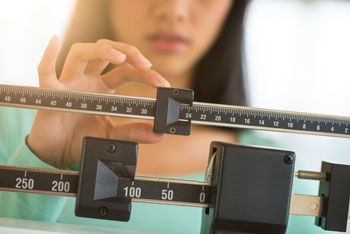 Most people have been getting dietary advice all wrong. Eat less, move more works only for some people for a period of time, but it is not solid long-term dietary advice.
Most people have been getting dietary advice all wrong. Eat less, move more works only for some people for a period of time, but it is not solid long-term dietary advice.
Low carbohydrate diets again and again show greater weight loss, increase in HDL, reduction in blood pressure, resolving diabetes and metabolic syndrome. They also reduce the risk for diabetes, cardiovascular disease, and cancer in numerous studies.
So why do we still give the wrong information? We will look at how the body becomes fat and the best performing dietary change for weight loss: a low carb/high fat diet.
Spikes in insulin after high carbohydrate meals, really large meals and too much protein in one meal can drive high insulin. High insulin drives fat storage. When you eat food that contains high carbohydrates and even worse high carbohydrates and fats together, the body makes triglycerides as the storage molecule for fuel for later. Then the body uses insulin to store that fat for later.
To understand how the body burns fat, you must first understand how the body produces fat from the foods you eat. And guess what, high carbohydrates drive this process the most.
Here’s a look at how food you eat becomes fat in the body:
Let’s take a look at how we digest and absorb fat:
1. Large fat molecules mix with bile salts from the gall bladder. The mixture then breaks down into smaller droplets called micelles, increasing the fat’s surface area.
2. The pancreas secretes enzymes called lipases that attaches to the surface of each micelle and break the fats down into, glycerol and fatty acids.
3. These parts get absorbed into the cells lining the intestine.
4. In the liver cells, the parts are reassembled into triglycerides, with a protein coating called chylomicrons. The protein coating makes the fat dissolve more easily in water.
5. The chylomicrons are released into the lymphatic system for transport.
6. The lymphatic system eventually merges with the veins, at which point the chylomicrons pass into the bloodstream.
Therefore, fat in the diet appropriate to your energy needs in a low carb diet will in most cases get used as fuel once you create insulin sensitivity. When you have the right conditions: Fat is released from the adipose tissue by adiponectin when insulin is low and glucagon and adrenaline is high — meaning your insulin levels are low.
7. The fat gets broken into free fatty acid by an enzyme called lipase. The fat binds to albumin in the blood.
8. The free fatty acid gets taken in the cells that use fat for fuel.
9. Fats such as coconut oil or MCT oil contain a type of fat called a medium-chain-triglyceride which does not get converted into triglycerides and gets used immediately as fuel.
When your body burns fat, surprisingly the fat cells themselves do not go anywhere. Your body doesn’t actually lose fat cells (though it can create more fat cells, when the ones it has become too full). “Burning fat” is the result of using stored fat as energy, which causes the fat cells to shrink.
In our next post, we will take a look at how fat is burned. Stay tuned!
Please contact us for more information on how we can help get and keep you healthy!
